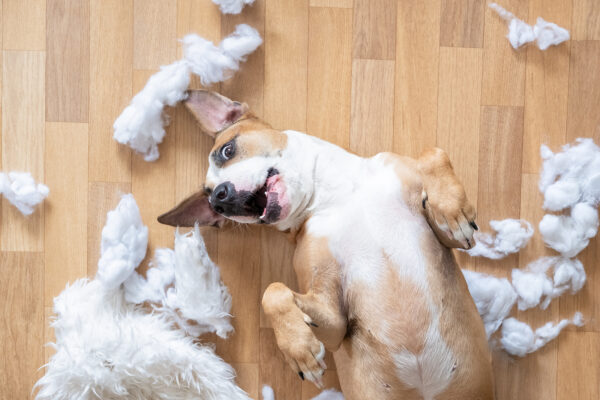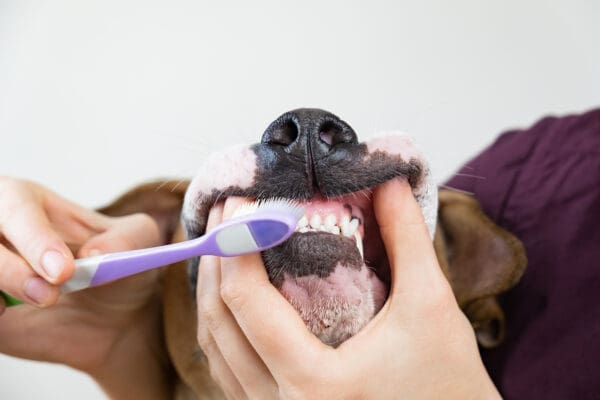
11401 NE 195th St. Bothell, WA 98011
(425) 486-9000 PHONE (425) 486-9002 fax
Natural History
The red tail boa (Boa constrictor ssp.) is a large snake in the Boid family, commonly found in South America, Central America, southern sections of North America, and the Caribbean. There are a number of subspecies spread across these areas, but their captive care and husbandry is the very similar across all types. Found primarily in rain forest habitats, they also do well in more arid conditions. There can be a wide variation in size between subspecies, with females larger than males. Adults range between 7 and 12 feet. They will sometimes weigh up to 50 pounds and live to 20+ years of age.
Husbandry
Housing: The enclosure should be big enough so that the length of two adjacent sides is equal or greater than the length of the snake. The enclosure for a red tail boa needs to be well constructed, as they are very strong and can be escape artists. A locking lid or door is a requirement. Many different enclosures work well for red tail boas, including plastic tub containers, melamine racks, or any of the commercially available glass aquariums made for reptiles. However, take note that any screen top cage will make it more difficult to provide adequate humidity. Juveniles do best in small enclosures that make them feel secure. A small snake in a big cage can become overwhelmed and stressed.
The bottom of the cage should be lined with reptile carpet, newspaper, paper towels, or recycled paper, because these substrates are easy to clean. Wood chips or shavings are not recommended, as they can give off fumes or dust which can irritate the snake’s respiratory system. Hiding spots large enough for the snake to curl up in completely should be provided in both the cool and warm ends of the enclosure.
Red tail boas are solitary animals; except during breeding season, they don’t associate with other snakes. It is not recommended to house more than one snake together unless you are actively trying to breed them.
Heating/Lighting: A thermal gradient should be provided for all red tail boas, with one side of the tank being cooler and the other side being warmer. This allows the snake to self regulate his/her body temperature by moving from one end of the cage to the other. A red tail boa’s enclosure should have a temperature of around 80°F at the cooler end and 88-90°F on the hot end, with a basking spot of 90-95°F. Appropriate heating elements are ceramic heat emitters or various heat bulbs (provided that any light-emitting heat bulbs are turned off at night), or under tank heaters attached to thermostats. The heat source should always be placed outside the cage, as snakes may curl up around it and burn themselves if they have access to it. “Hot rocks” should not be used, as they often lead to severe burns.
It is important to purchase a temperature gun, or digital thermometers that possess probes, for accurate temperature readings. Plastic dial thermometers, or any thermometer with a fixed placement, are often unreliable, and do not adequately gauge thermal gradients inside entire enclosures. Red tail boas do not require specialized UV lighting.
Humidity: Red tail boas prefer a humidity of 60-70%. A hygrometer can be used to monitor humidity levels. Humid hides made out of enclosed Tupperware, Rubbermaid, or other appropriately sized plastic tubs should be provided for all red tail boas that are kept in screen top cages. These hides should contain approximately 1-2 inches of damp sphagnum, peat, or green moss, which should be changed out whenever soiled.
Water dishes should be wide, preferably large enough for the snake to soak in, and placed under a heat source to promote evaporation. They must be kept scrupulously clean. If the snake is too large for soaking in its bowl, the animal should be removed from the cage and soaked at least once weekly in a tub of tepid water.
Diet
Red tail boas should be fed appropriately sized whole prey items no larger than the largest part of the snake’s own girth. Newborns can eat fuzzy rats or small mice, while full-grown adults will eat large rats. Mature prey items have a higher nutritional content than immature prey, so it is better to feed an adult mouse than a fuzzy rat. A feeding schedule of every 5 to 7 days is suitable for babies, while adults can be fed once every 7 to 10 days. It is healthier for a snake to eat smaller portions more frequently than it is to feed larger portions less frequently. All red tail boas should be fed pre-killed prey for the safety of the snake. Previously killed, frozen prey should be thawed completely to room temperature before feeding. Never feed prey that is still frozen, and never use a microwave to heat the frozen prey.
We advise feeding snakes in a separate (secure) box that is not their main cage. Snakes fed in their cage can come to associate the lid or door opening with food, and may strike at your hand when reaching in to clean or to take the snake out for some other purpose. Instead of feeding in the cage, place the snake in a separate box in a dim, quiet area to let them feed in peace. They may need to remain there for several hours before feeling comfortable enough to eat.
Handling
Holding a snake can be a safe and enjoyable experience, but some precautions should be taken. Always wash your hands before and after handling, and never let your snake wrap itself around your neck. The more a snake is handled, the more comfortable/tame it will become.
Safety Concerns
An adult red tail boa is a very gentle, but very strong animal, and could potentially harm a person. They should not be allowed to wrap around any person’s neck or be carried on their shoulders. Small children should not be left unattended with them.
Common Medical issues
Shedding: Shedding problems are common in snakes that are ill or suffering from improper husbandry. A healthy, well-kept snake should shed their skin in a single piece, including the caps over their eyes and the tail tip. If your snake is having difficulty clearing the whole shed in one or few pieces, we recommend a veterinary exam.
Respiratory disease: Boas are susceptible to diseases in their respiratory system. If you notice that your snake is breathing with its mouth open, rasping when breathing, or has any kind of bubbling or discharge from the nostrils, contact your veterinarian right away.
Injuries from Prey: When a snake is reluctant to eat for whatever reason, rodents that are left in the cage can chew on the snake’s skin and remove large chunks of skin/scales. They can also deliver damaging bites when the snake attempts to asphyxiate them, sometimes injuring the snake’s head and causing lifelong deformities. In some cases, these bites can be fatal. It is recommended that snakes be fed pre-killed prey to prevent any injuries.
Parasites: Parasites in the gastrointestinal tract can be a problem in any reptile. The best way to prevent this from being an issue is to have yearly fecal exams with your veterinarian while maintaining excellent husbandry at home.
Anorexia: Inadequate temperatures, improper cage size, going into shed, reproductive activity, or simply being offered a food that is different than normal can sometimes upset a red tail boa into refusing food. Careful monitoring of any snake who refuses food is recommended to assess whether or not other symptoms of sickness are showing, and persistent anorexia warrants a veterinary visit.
Scale rot: With particulate substrates such as shredded aspen, the risk of scale rot is higher than it might be with paper towels, but the biggest cause of this issue is an improperly cleaned cage. Scale rot will show up as brown or raw pink ulcerations on the snake’s belly, and will begin to erode the scales themselves if left untreated.
March 30, 2015
Content of this Care Sheet Courtesy of:
The Center for Bird and Exotic Animal Medicine
11401 NE 195th St. Bothell, WA 98011
(425) 486-9000 PHONE (425) 486-9002 fax



